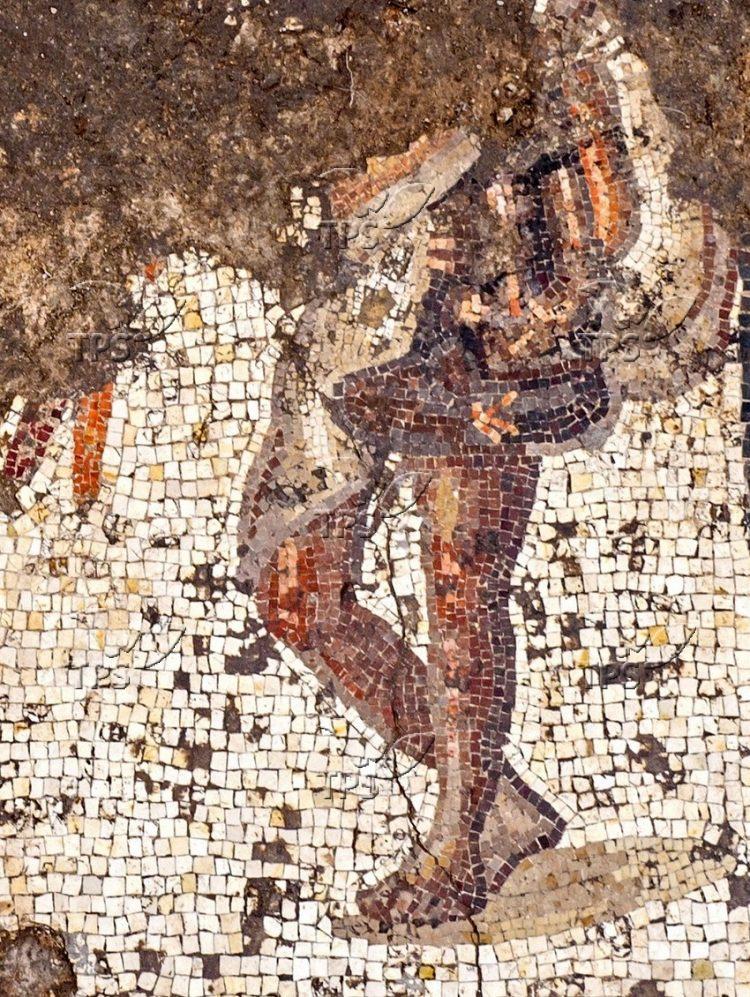Rare Roman Mosaic Uncovered in Caesarea Excavations
Jerusalem, 8 February, 2018 (TPS) -- A rare, multi-colored Roman mosaic dating back about 1,800 years, came to light one week ago at the Caesarea National Park during works for the development of the area, the Israel Antiquities Authority announced on Thursday.
The excavations, led by the IAA and the Caesarea Development Corporation throughout Caesarea National Park, in cooperation with the Israel Nature and Parks Authority first uncovered a large, opulent building dating back 1,500 years to the Byzantine period.
The team was very surprised when under the imposing Byzantine-era structure they found the spectacular mosaic measuring more than 3.5 x 8 meters. The mosaic features three figures, all males who wear togas, which indicate they belong to a high-level social class, multicolored geometric patterns and a long inscription in Greek.
“The inscription was probably damaged by the Byzantine building constructed on top of the mosaic, “ said Dr. Uzi Ad, director of the excavation for the IAA.
It is not clear yet if the usage of the Byzantine building was public or part of a private house. “If the mosaic was part of a public building, the mail figures might have represented the donors of the mosaic or members of the city council , if it was part of a mansion, the figures might have been the owners,” continued Ad.
According to Jacques Nagar, head of the IAA Art Conservation Department the mosaic was executed at a very high artistic level, of a type that can be found in places like Antioch in Turkey.
“ The images were depicted using small, densely placed tesserae – with about 12,000 stones per square meter. The Israel Antiquities Authority Conservation Administration is now working to make sure that the exposed parts of the mosaic are preserved and will not disintegrate over time,” Nagar said in a statement.
The archeological site is situated on the border of the National Park with the town of Jisr a-Zarqa, where works are undergoing on reconstruction of the impressive Crusader-era entrance bridge to Caesarea which will be a promenade for the tourists.
In the wake of the finding, the area of the bridge will be slightly re-planned to make the mosaic assessable to the public.
The archaeological excavation where the mosaic was found is part of a new conservation and reconstruction project of the Caesarea National Park funded by the Edmond de Rothschild Foundation and the Caesarea Development Corporation with an investment of over 100 million shekels.
“ The mosaic is further testimony to the importance of the unprecedented conservation and reconstruction project made possible by the Edmond de Rothschild Foundation. The foundation’s investment enables expansion of intensive excavation to other areas in the Old City of Caesarea, and we are of course committed to continuing to unearth Caesarea’s hidden treasures,” said Guy Swersky, Vice Chairman of the Edmond de Rothschild Foundation.
More than 700.000 tourists visit the Caesarea National park every year making it one of the three most visited sites in Israel.


